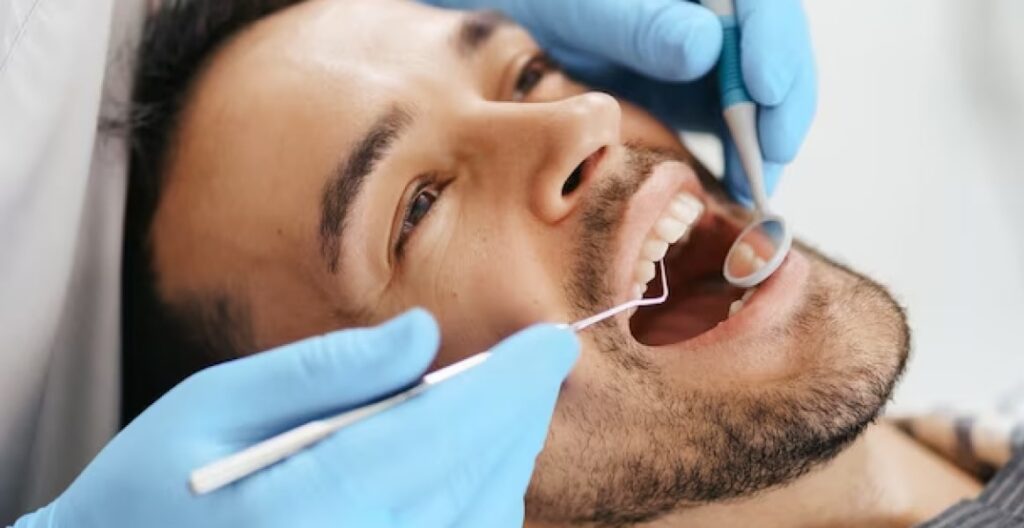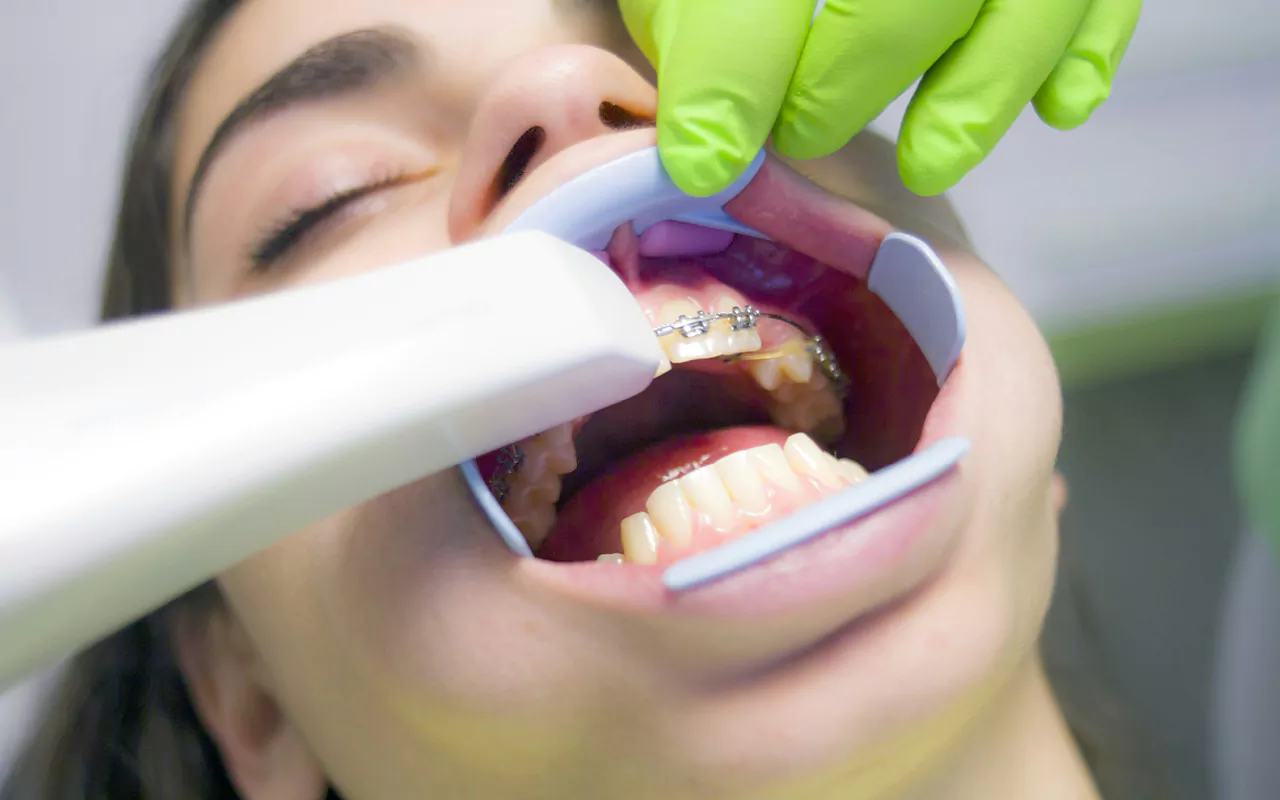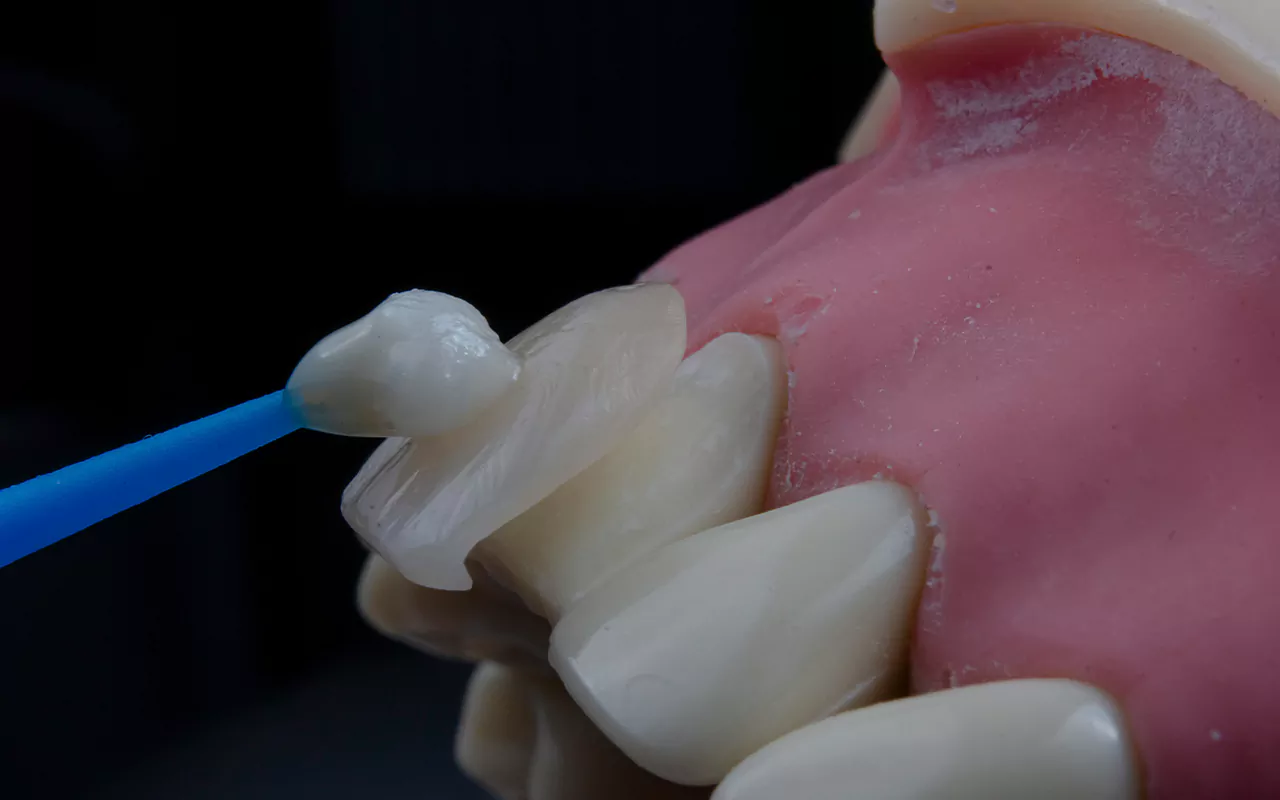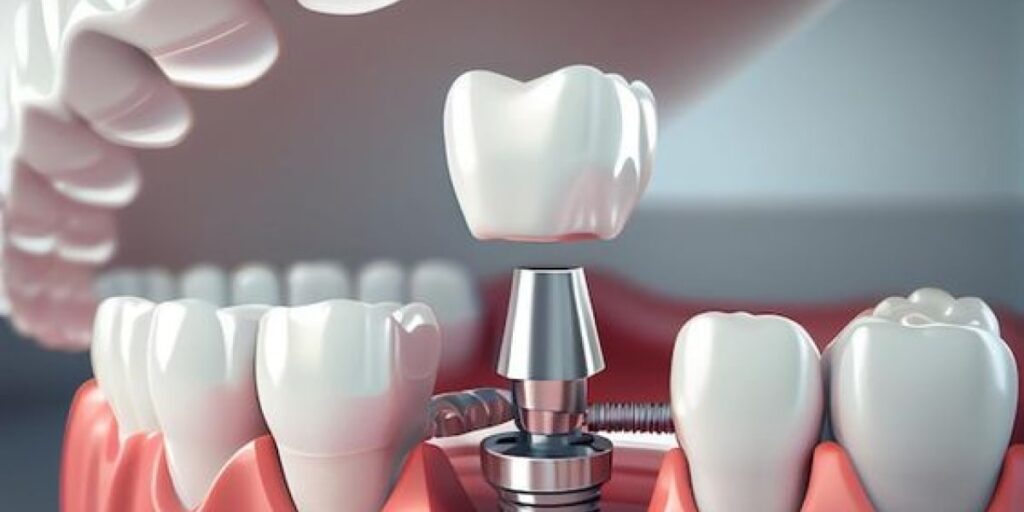What is Dental Implant Bone Grafting and How is it Done?
Bone grafting surgery is an advanced and effective technique in modern dentistry used to increase bone density in the jaw, facilitating the dental implant placement process. This procedure is often prescribed for individuals who have experienced jawbone loss or lack sufficient bone density in the upper or lower jaw.
There is a close link between osteoporosis (bone thinning) and dental implants; however, this doesn’t mean that implant placement is impossible if you have osteoporosis. In fact, the quality and stability of the implant depend heavily on the bone density in the jaw area.
If you are considering dental implants, it is highly recommended that you have these evaluations performed at specialized dental clinics. This preventive action allows for a thorough assessment of your jawbone condition and the adoption of appropriate treatment decisions. If needed, you will benefit from this effective method to increase gum strength and enhance jawbone density.
This ensures the stability and long-term durability of the dental implants. Specialized assessments play a central role in the success of implant treatment and prevent potential future complications. Therefore, consulting a specialist and undergoing the necessary examinations is an essential step toward achieving a beautiful and lasting smile.
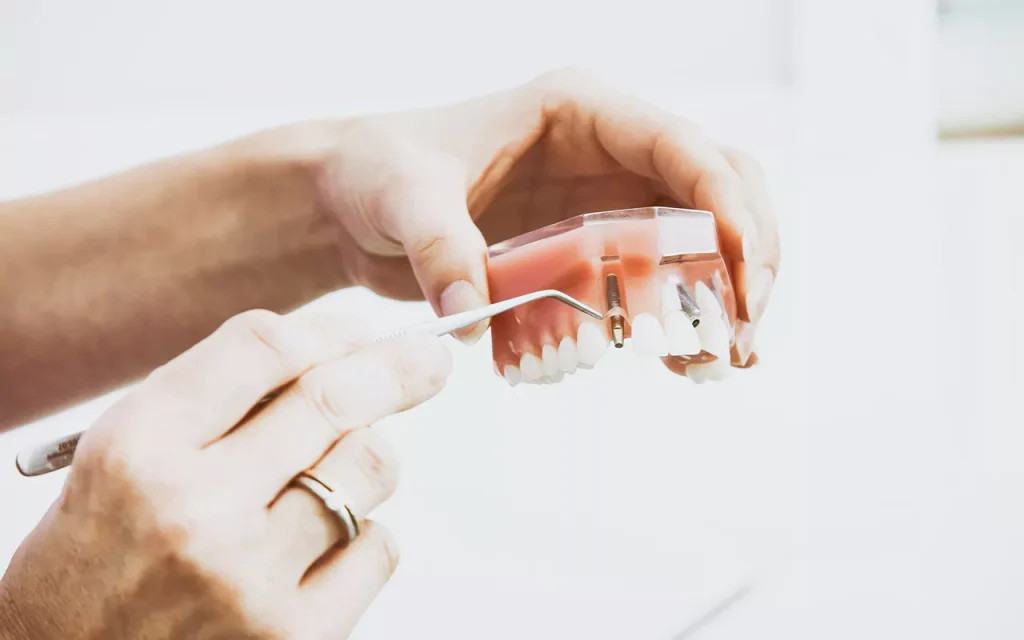
The Best Time for Bone Grafting for Implant Placement
In dental implant treatment, bone grafting plays a vital role, especially when the patient faces a deficiency in jawbone volume. The timing of the bone graft relative to the implant placement is determined by the extent of the bone loss.
Simultaneous Grafting (Minor Deficiency): If the patient requires only a small amount of bone graft, this procedure can be performed at the same time as the implant placement. This approach, known as “simultaneous grafting,” offers advantages like reducing the number of surgical stages and shortening the overall treatment time. It’s particularly effective when the bone defect is limited.
Staged Grafting (Significant Deficiency): Conversely, if clinical and radiographic evaluations indicate a significant bone deficiency, a different approach is necessary. In this condition, the bone graft must be performed at least four months before the implant placement. This waiting period, known as the “graft stabilization period,” is crucial for achieving optimal results and ensuring the long-term stability of the implant.
This waiting period allows the grafted bone tissue to fully form and strengthen, creating a suitable foundation for the implant. This difference in timing stems from the importance of the jawbone’s quality and quantity in the success of implant therapy. Placing an implant in an area with insufficient bone volume and density can lead to treatment failure and complications. Therefore, the accurate diagnosis of the degree of bone loss and the determination of the appropriate grafting timeline are primary responsibilities for specialists. This information helps patients better understand the treatment process and the significance of its various stages.
Types of Bone Grafts
There are four main types of bone grafts for dental implants, which we will discuss below:
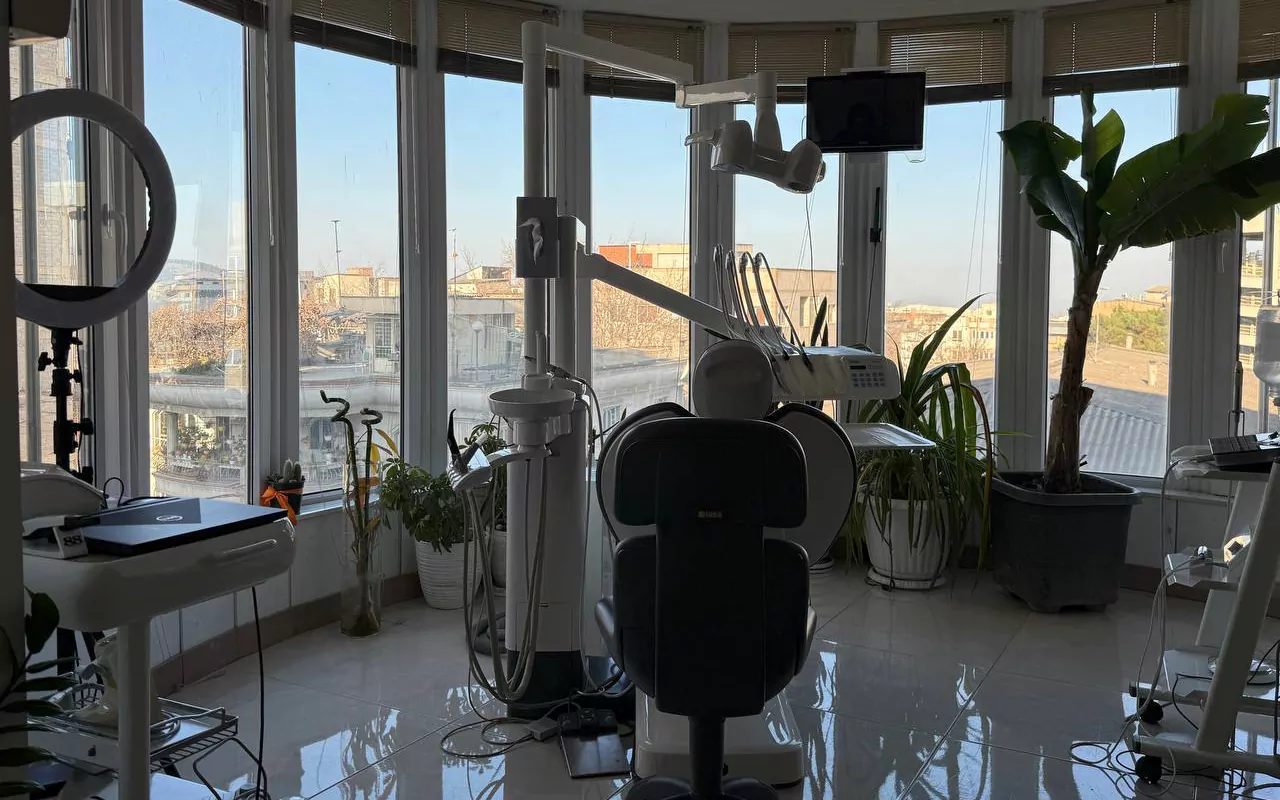
1. Autograft Gum Bone Grafting
Implant specialists utilize the autograft technique when a patient presents with a significant bone deficiency. This method, recognized as the “gold standard” in bone grafting, involves harvesting bone tissue from the patient’s own body and grafting it to the intended area in the jaw. The source of this graft tissue is typically various sites, including the hip (iliac crest), lower jaw (mandible), femur (thigh bone), forearm, lower leg, and even the knee.
This variety in donor sites allows the clinician to select the most appropriate area based on the required volume and quality of bone. The harvested bone segments, referred to as “grafts,” are secured to the jawbone using small screws. These screws, which act as temporary stabilizers, are removed when the dental implant is placed later.
Following the autograft procedure, a period of convalescence and rest is necessary for the patient. This period, which lasts approximately four weeks, is intended to accelerate the healing process and the fusion of the graft to the jawbone. After this time, the patient can gradually resume physical activity. Notably, the bone at the donor site (e.g., the femur) is capable of regeneration, which typically occurs after about three months.
However, it is important to mention that autografting, as a surgical process, carries certain considerations. These include the use of general anesthesia and the potential for post-operative side effects. Furthermore, the prescription of strong analgesics for pain management is another notable aspect of this procedure. Therefore, selecting autografting requires a precise evaluation of the patient’s condition and a careful assessment of its benefits and drawbacks by the specialist.
2. Xenograft Gum Bone Grafting
In the xenograft method, the source of the grafting material is of natural, non-human origin. Specifically, these natural mineral materials, primarily derived from bovine (cow) bone, undergo meticulous and controlled sterilization processes in laboratory settings. These processes guarantee the elimination of any pathogenic agents, creating safe conditions for the graft. After preparation, these materials are stored under specific conditions at low temperatures (freezing) to preserve their quality and properties. This careful storage prevents the degradation of the material’s structure and a reduction in its effectiveness.
Xenografting is recognized as a proven and effective method for bone grafting. This technique has been extensively researched, studied, and used over many years, and its safety and efficacy are well-established. Numerous studies and clinical experiences have shown that the use of xenografts in bone grafting is associated with the lowest rate of side effects and generally causes no particular issues for the graft recipients.
This safety profile is due to the rigorous sterilization processes and the removal of organic animal bone components, which minimize the likelihood of immune reactions. Consequently, xenografting is a reliable and trustworthy treatment option for various bone grafting needs, including dental implants. By providing a suitable matrix for new bone growth, this method significantly aids in the repair and reconstruction of bone tissue.
What are the Advantages and Disadvantages of Xenograft Bone Grafting?
Advantage: Since the source of the bone graft material is external to the human body, there is no need for surgery to harvest bone marrow (from the patient’s own body). Only a single surgical procedure is required for the actual bone grafting. Also, because these materials are sterilized and stored in laboratory freezers, the chance of disease transmission is very low.
Disadvantage: This method is not suitable for patients requiring extensive, large-surface reconstructions.
3. Allograft Gum Bone Grafting
In the allograft method, similar to the xenograft method, the source of the material used for the jawbone graft in an implant procedure is external and not derived from the patient’s own body. However, the fundamental difference between the two lies in the source of the graft tissue. While xenografts use animal bone (typically bovine), allografts utilize natural bone tissue from another human being. This difference carries its own specific biological and immunological implications.
The bone used in allograft surgery is harvested from deceased individuals who gave consent for tissue donation prior to their passing. This bone, sourced from reputable bone banks, undergoes meticulous laboratory processing and evaluation before being used for grafting. These checks include serological testing to ensure the absence of transmissible infectious diseases.
Furthermore, the donated bones are sterilized using specific methods, such as gamma irradiation or chemical processes, to eliminate any potential pathogens. After these steps, the bones are stored under special conditions in ultra-low-temperature freezers to preserve their quality and structure until use. This precise and controlled process ensures the safety and efficacy of the allograft method and minimizes the risk of disease transmission.
Advantages and Disadvantages of Allograft Bone Grafting
Advantage: Similar to the xenograft method, this technique does not require two separate surgical procedures, and only one grafting surgery is needed to supply the bone.
Disadvantage: Despite the fact that the bone tissue is rigorously screened and tested in the laboratory, there still exists a possibility of disease transmission to the graft recipient.
4. Alloplast Gum Bone Grafting
In the field of bone grafting for dental implant placement, the alloplast method is unique and distinct from the other approaches. This technique, the last one to be discussed, fundamentally differs from the three previous methods (autograft, allograft, and xenograft). The most important distinguishing feature of alloplasts is the non-utilization of natural bone tissue, whether from animals, another human, or the patient’s own body. This characteristic makes alloplast a unique option for specific conditions.
In the alloplast method, instead of directly grafting bone tissue, specialized materials known as “synthetic materials” or “alloplastic materials” are used. These materials, which have an artificial origin, are composed of compounds like hydroxyapatite, tricalcium phosphate, and other biocompatible ceramics. The mechanism of action for these materials is that they stimulate the body’s cells, accelerating and facilitating their transformation into bone tissue. In other words, the synthetic materials act as a scaffold upon which bone-forming cells can be deposited and begin to create new bone tissue.
This process, also known as “Guided Bone Regeneration,” leads to the repair and reconstruction of the targeted area in the jaw. The use of synthetic materials offers advantages such as easy accessibility, reduced risk of disease transmission, and no need for additional surgery to harvest bone tissue. However, the selection of this method requires a precise evaluation of the patient’s condition and the specialist’s diagnosis.
What is the Advantage of the Alloplast Bone Grafting Method?
The most important advantage of the alloplast method is that, in addition to reducing the possibility of disease transmission, it is considered the least invasive bone grafting surgery.
Who Needs a Dental Bone Graft?
As mentioned earlier, jawbone grafting surgery is not necessary for all dental implant candidates. This surgical intervention is prescribed exclusively for a specific group of patients who face particular conditions, and performing it is considered essential before implant placement. Accordingly, individuals who are identified as suitable candidates for jawbone grafting to prepare for an implant fall into the following categories:

Who Needs a Dental Bone Graft?
As previously mentioned, jawbone grafting surgery is not necessary for all dental implant candidates. This surgical intervention is prescribed exclusively for a specific group of patients who face particular conditions, and performing it is considered essential before implant placement. Accordingly, individuals who are identified as suitable candidates for jawbone grafting to prepare for an implant fall into the following categories:
Individuals with Long-Term Tooth Loss: Prolonged absence of teeth can lead to progressive jawbone atrophy in the edentulous area. This atrophy results from the lack of stimulating forces normally transmitted from the tooth root to the bone.
Individuals with Severe Gum and Jawbone Loss Due to Missing Teeth: These patients require reconstruction of the supporting structures (gum and bone) before implant placement because these structures have been severely degraded.
Severe Trauma to the Gums and Jawbone: Major blows or injuries to the face and jaw area can result in fractures or damage to the bone and gum, which necessitate bone grafting for repair and reconstruction.
Individuals with Periodontal Disease (Gum Disease): This inflammatory disease involves the destruction of the tooth-supporting tissues, including the jawbone. In advanced cases, bone grafting is essential to create a suitable foundation for the implant.
Congenital Defects: Some individuals are born with deficiencies in the jawbone structure, which require bone grafting to correct the defect and allow for implant placement.
Severe Reduction in Upper and Lower Jawbone Density: Reduced bone density, which can result from various factors including osteoporosis, leads to decreased bone strength and the inability to retain an implant. Bone grafting in these cases provides the necessary density and strength.
It should be noted that the above cases are based on research and studies conducted in the field of dental implant bone grafting. However, the final decision regarding the necessity of performing a bone graft before implant placement rests with the specialist dentist, who will make a determination after conducting precise clinical examinations and reviewing the results of various tests.
How is Dental Implant Bone Grafting Performed?
When the volume and density of the jawbone are insufficient for dental implant placement, a jawbone graft becomes essential to create a suitable foundation. This process aims to repair and rebuild the bone tissue by injecting or grafting bone materials. However, before proceeding with the jawbone graft for an implant, a series of initial tests and imaging scans are mandatory.
The main stages of bone grafting to prepare for dental implant placement are as follows:
Local Anesthesia Injection: At the beginning of the procedure, local anesthesia is injected into the targeted areas of the jaw so that the patient feels no pain during the surgery. This ensures the patient’s comfort throughout the process.
Incision and Gum Tissue Reflection: After administering the anesthesia, the dentist makes a fine incision in the gum and gently lifts the tissue covering the bone to expose the jawbone surface. This step provides access to the intended grafting area.
Disinfection of the Jawbone Surface: The exposed jawbone surface is meticulously cleaned and sterilized by the dental team using appropriate antiseptic agents. This action prevents the occurrence of post-surgical infection.
Filling the Defect with Bone Graft Material: The void in the jawbone is filled with specialized bone graft materials, which can be sourced from various origins, such as the patient’s own bone, animal bone, or synthetic materials. These materials serve as a scaffold for new bone growth.
Placement of a Barrier Membrane: After placing the grafting materials, a special artificial membrane (also known as a “membrane”) is placed over the surgical area. This membrane prevents soft tissue from migrating into the graft site and guides the bone-forming process.
Suturing the Gum Tissue: In the final step, the gum tissue is carefully sutured using either absorbable or non-absorbable stitches. These sutures help maintain the position of the graft materials and accelerate the healing process.
Important Tips for Preparation Before Jawbone Grafting Surgery
Complex and extensive preparation is not strictly necessary for this supplemental surgery, which is performed to prepare the site for implant placement. However, following a few simple guidelines can significantly help ease the surgical process and improve the recovery period. These tips primarily focus on controlling factors that affect bleeding and reducing the chance of complications.
Fasting Requirement: It is recommended to avoid consuming any food or drinks for eight to twelve hours before the jawbone grafting surgery. This measure is taken to reduce the likelihood of nausea and vomiting caused by anesthesia or sedation drugs. An empty stomach lowers the risk of aspiration (stomach contents entering the lungs) during the surgery.
Inform Your Dentist About Medications: If you are taking any specific medication for any reason, it is essential to inform your dentist before the surgery begins. This is particularly important for individuals taking blood thinners (such as Warfarin, Aspirin, and Clopidogrel). Thin blood during surgery can lead to increased bleeding and complications for the patient. By knowing your medications, the dentist can take necessary measures to control bleeding during and after the surgery. It may be necessary to temporarily change the dosage or usage of your medication in consultation with your prescribing physician.
Arrange for a Companion: It is recommended to have someone accompany you after the surgery due due to the possibility of bleeding and feeling weak. This companion can escort you home or drive your vehicle to your destination if needed. This is especially important in the initial hours after surgery when the effects of local anesthetics or pain medication may still be present.
Having a companion contributes to the safety and comfort of the patient after surgery.
Benefits of Dental Bone Grafting for Implants
Performing bone grafting as a supplementary intervention in the dental implant procedure yields numerous advantages for patients. These benefits not only contribute to improved implant function but also positively impact overall oral health and aesthetics. The most significant of these advantages include:
Increased Jawbone Density, Volume, and Strength: Bone grafting significantly enhances the volume, density, and resilience of the bone tissue. This creates an appropriate foundation for implant placement and stability, preventing further bone loss. This increased strength is particularly important for patients with osteoporosis or severe jawbone atrophy.
Optimal Stabilization of the Implant After Complete Bone Integration: Following the grafting and healing period, the placed implant becomes firmly anchored in the jawbone. This stabilization, known as “osseointegration,” is essential for the long-term success of the implant and ensures natural tooth function.
Increased Clinical Crown Length and Improved Tooth Aesthetics: In some cases, jawbone atrophy can lead to the teeth appearing shorter. Bone grafting, by rebuilding the underlying bone structure, allows for the potential increase in clinical crown length, improving the overall aesthetic appearance of the teeth.
Ideal and Desirable Smile Reconstruction: By repairing and rebuilding the bone and gum structure, bone grafting plays a vital role in enhancing the smile design, boosting the individual’s aesthetics and self-confidence. This is especially important for individuals whose facial and smile profiles have changed due to tooth loss and bone resorption.
Permanent Treatment for Gum Recession and Bone Density Issues: Bone grafting helps provide a permanent solution for gum recession and problems stemming from reduced bone density by reconstructing the lost tissue. This benefits not only the condition of the teeth but also overall oral health, preventing the progression of gum diseases.
Enhanced Stability and Aesthetics of Dental Prostheses: By creating a suitable bone foundation, dental prostheses (dentures) can be seated with greater stability and aesthetic appeal within the gum and jawbone. This improves not only chewing and speaking function but also the appearance, making the artificial teeth look more natural.
Complications of Jawbone Grafting for Implant Placement
Jawbone grafting is recognized as an effective and relatively safe treatment in modern dentistry. By rebuilding lost bone tissue, this technique enables implant placement and improves oral function and aesthetics. Nevertheless, as with any surgical intervention, there is a possibility of side effects occurring.
These complications are usually mild and temporary and are well-managed with adherence to post-operative care instructions. However, both the patient and the doctor should be aware of these potential complications before the surgery. Some of the possible side effects of jawbone grafting include:
Bleeding: Slight bleeding after bone grafting surgery is normal and is usually controlled with gentle pressure using sterile gauze. However, in rare cases, more severe bleeding may occur, requiring medical intervention.
Infection: Infection at the graft site is a possible complication after any surgery. Maintaining good post-operative oral hygiene and taking prescribed antibiotics play a crucial role in prevention. Signs of infection include redness, swelling, severe pain, and pus discharge from the surgical site.
Pain: Pain after bone grafting surgery is common and is typically well-controlled with prescription pain medication. The intensity of the pain varies depending on the extent of the surgery and the patient’s pain tolerance.
Swelling: Swelling in the surgical area is a natural body reaction to surgical trauma and usually peaks within the first few days after the operation before gradually subsiding. Using cold compresses and following the doctor’s instructions helps reduce swelling.
Bone Graft Failure (Non-union): In rare cases, the bone graft may not properly fuse with the jawbone. This condition, known as “non-union” or “graft failure,” can result from various factors, including infection, insufficient blood supply to the graft site, or specific patient medical conditions. If this complication occurs, re-operation may be necessary.
Damage to Nerves or Blood Vessels: In very rare instances, there is a possibility of damage to adjacent nerves or blood vessels during surgery. This complication can lead to temporary or permanent numbness in the affected area.
Generally, the complications of jawbone grafting are usually mild and manageable and resolve with proper post-operative care. However, it is very important to thoroughly discuss the risks and benefits of the procedure with your dentist before undergoing it and to share all your questions and concerns. This conversation will help you make a fully informed decision about the procedure.
Is Dental Implant Bone Grafting Painful?
Generally, a bone graft for an implant, like other restorative and cosmetic dental surgeries, can be accompanied by some degree of pain and discomfort. This is a natural bodily reaction to the surgical procedure. Fortunately, the patient will feel no pain during the surgery due to the use of local anesthetics. However, after the surgery is completed and the anesthetic effect gradually diminishes, pain in the surgical area and the bone graft site is likely. This pain usually peaks in intensity during the first few days after surgery and then progressively lessens.
To manage pain and facilitate wound healing and jawbone repair after the graft, the treating dentist will prescribe appropriate pain relievers and antibiotics. Taking these medications not only helps control the pain but also prevents infection. Currently, Non-Steroidal Anti-Inflammatory Drugs (NSAIDs) such as Ibuprofen, Gelofen (a brand name of Ibuprofen), and Novafen, as well as Acetaminophen (Tylenol, typically $500\text{ mg}$ dose), are widely used for post-graft pain management. These drugs help alleviate symptoms by reducing inflammation and inhibiting the production of pain-causing chemicals in the body.
In addition to pain relievers, antibiotics are also recommended to prevent potential post-operative infections. Amoxiclav and Amoxicillin are typically prescribed as common antibiotics in these cases. The usual dosage for these medications is three times a day (every 8 hours). However, it must be stressed that the precise prescription and dosage are the responsibility of the treating dentist and are determined based on each patient’s specific condition. Therefore, self-medication is strongly discouraged. If any problems or an escalation of pain occur after surgery, you must immediately contact your dentist.
Does Dental Bone Grafting Require General Anesthesia?
Typically, bone grafting does not require general anesthesia and is often performed easily using local anesthesia. This helps reduce the risks associated with general anesthesia and speeds up the patient’s recovery process. However, in certain specific cases, the periodontist (gum specialist) may prescribe sedative drugs to increase the patient’s comfort and ease during the surgical procedure. These medications help reduce anxiety and induce a state of relaxation, making the surgical experience more pleasant for the patient.
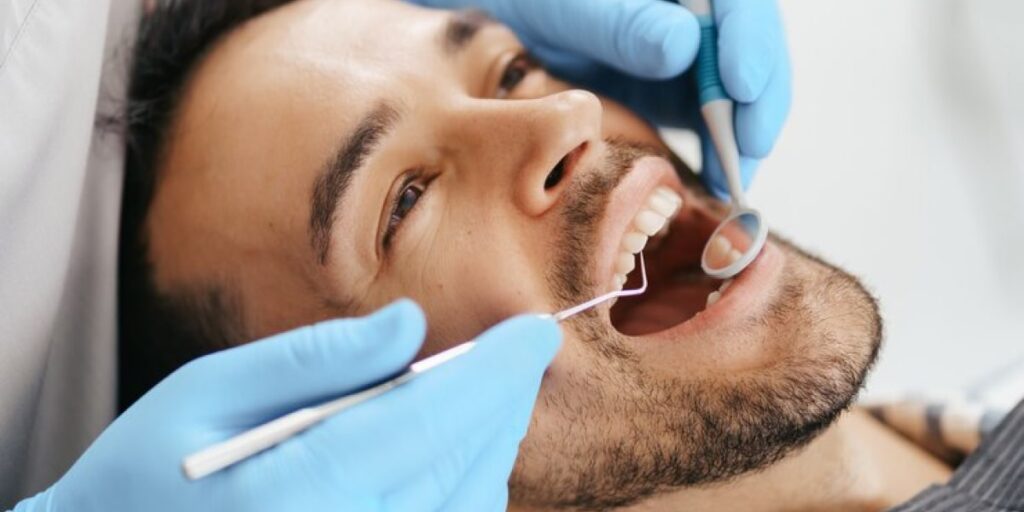
Sedation Methods Used in Bone Grafting Surgery
The methods used for sedation during bone grafting surgery are as follows:
Nitrous Oxide (“Laughing Gas”): Nitrous oxide is a colorless, odorless gas administered to the patient through inhalation. This gas provides a mild sedative effect, inducing a feeling of relaxation and reducing anxiety. The effects of nitrous oxide appear quickly and dissipate just as quickly after the gas is stopped.
Oral Sedation (Pills): Oral sedative medications, in the form of tablets or capsules, are given to the patient before the surgery begins. These drugs help relax the patient during the procedure by causing drowsiness and reduced consciousness. The duration of the effect varies depending on the type and dosage of the medication.
Intravenous (IV) Sedation: Intravenous (IV) sedation involves injecting sedative drugs directly into the patient’s bloodstream. This method offers a faster and stronger effect than other methods and allows the doctor to precisely control the level of sedation. In this state, the patient is in a deeper state of drowsiness but is generally still able to respond to the doctor’s commands.
In special cases, such as extensive and complex surgeries or for patients with severe anxiety, the periodontist may recommend general anesthesia. General anesthesia is a state of complete unconsciousness where the patient fully loses awareness. This method is usually performed in a hospital or equipped surgical center.
Ultimately, the best option for anesthesia or sedation during bone grafting surgery is determined by the patient’s specific condition and the specialist’s diagnosis. It is recommended that you discuss the available options with your dentist, as they are the best person to determine the most suitable method for you.
Can a Dental Bone Graft Fail?
Gum bone grafting generally enjoys a notably high success rate. This procedure enables implant placement and improves oral health by regenerating lost bone tissue. Nevertheless, as with any medical intervention, there is a possibility of complications and failure. This risk increases, particularly among individuals who smoke or suffer from certain medical conditions. Factors like uncontrolled diabetes, immune system deficiencies, and some autoimmune diseases can negatively affect the healing process and the graft’s success.
Therefore, awareness of the potential signs of graft failure is crucial for early detection and appropriate action.
Signs of Dental Bone Graft Failure
The signs of dental bone graft failure can manifest in various ways, the most important of which are listed below:
Persistent or Worsening Pain or Swelling: Some pain and swelling after bone grafting surgery are normal and typically diminish gradually within the first few days. However, if the pain or swelling does not improve or intensifies after the first week, it could be a sign of a problem with the graft. This may be due to infection or inadequate blood supply to the grafted area.
Infection and Pus Discharge from the Graft Site: Infection is a serious potential complication after any surgery, including bone grafting. Symptoms like redness, swelling, warmth, and pus discharge from the graft site indicate an infection and require immediate medical intervention. Untreated infection can lead to graft failure and more severe problems.
Gum Recession (Gums Pulling Away from Teeth): Gum recession means the gum tissue pulls back from the teeth. If gum recession is observed after the graft, it can be a sign of graft failure and subsequent loss of the underlying bone.
Lack of Improvement in Jawbone Volume: The primary goal of bone grafting is to increase the volume and density of the jawbone. If no improvement in jawbone volume is observed after a sufficient healing period, it suggests graft failure. This issue is detectable through radiographic imaging.
If you observe any of these symptoms, it is essential to contact your dentist immediately. Early diagnosis and appropriate intervention can prevent more serious problems and complete graft failure.
How Long Does Recovery Take After a Dental Bone Graft?
Several factors influence the length of the recovery period, including:
Type of Bone Graft: The type of grafting material used (autograft, allograft, xenograft, or alloplast) plays a major role in the speed and quality of healing. For instance, an autograft, which uses the patient’s own bone, generally heals faster than other methods because the tissue is perfectly compatible with the body.
Graft Location and Size: The area of the jaw where the graft is placed also affects the recovery time. Grafts in areas with better blood supply usually heal quicker. Similarly, the extent of the graft site is a factor; larger grafts require more time for repair and regeneration.
Patient’s Healing Capacity: The patient’s general health status, immune system, and the presence of underlying conditions like diabetes influence the speed of recovery. Individuals in good overall health with optimal immune function typically experience a shorter convalescence.
Surgeon’s Skill and Experience: The skill and experience of the surgical specialist are crucial for the success of the graft and minimizing post-operative complications. A precise and well-executed surgery can help accelerate the healing process and reduce the likelihood of subsequent issues.
Therefore, it is essential to understand that complete recovery after a bone graft is a time-consuming process that demands patience and strict adherence to the treating doctor’s instructions. Regular follow-up appointments with the dentist and monitoring the graft status are vital to ensure proper healing and prevent any potential complications.
Essential Post-Operative Care After Jawbone Grafting Surgery
Following jawbone grafting surgery to prepare for implant placement, adherence to a series of essential care instructions is crucial. These measures not only help accelerate the healing process but also minimize the risk of complications such as suture tearing and surgical site infection. Strict adherence to these guidelines will ensure a successful recovery and optimal treatment results. The necessary post-operative care for a jawbone graft is as follows:
Avoid Brushing in the Early Days: Strictly refrain from brushing the surgical area in the initial days after the bone graft. Direct contact with a toothbrush can damage the healing tissues, irritate the wound, and potentially tear the sutures. This can disrupt the healing process and increase the risk of infection. To maintain oral hygiene during this period, you can use the mouthwash prescribed by your dentist. After a few days, and only with the doctor’s approval, you can slowly and carefully resume brushing in other areas of the mouth, while still avoiding direct contact with the surgical site.
Use Pain Medication: To manage post-operative pain and gum inflammation, you can use over-the-counter pain relievers such as Acetaminophen, Ibuprofen, and Novafen (a brand of NSAID). These medications help reduce the patient’s discomfort and facilitate the healing process. However, it is advisable to consult your dentist before taking any medication to ensure the correct drug and dosage. If stronger medication is prescribed by your doctor, follow their instructions precisely.
Use a Straw for Drinking Liquids: Use a straw for drinking all liquids, especially in the first few days after surgery. This prevents direct contact between liquids and the surgical site, which could irritate the wound. More importantly, the suction created by drinking directly from a cup or glass can dislodge the blood clot at the surgical site (leading to a condition known as “dry socket”) or cause bleeding.
Avoid Smoking: If you are a tobacco user, you are strongly advised to abstain from cigarettes, hookah, and all other forms of tobacco for several days after the surgery. The chemical compounds in tobacco smoke, particularly nicotine, can impair wound healing and increase the risk of infection. Furthermore, smoking can reduce blood flow to the surgical area, delaying bone tissue repair. This can lead to graft failure and more serious complications.
What is the Cost of Bone Grafting for Implants in Gorgan?
The cost of bone grafting, like other dental services, is influenced by multiple factors. These factors determine the final price of the procedure, meaning a fixed and definitive rate cannot be established. Understanding these factors helps patients gain a more realistic perspective on the treatment costs. These influencing factors include:
Method of Bone Grafting Used: Different grafting methods exist, including autograft, allograft, xenograft, and alloplast. Each method carries a different cost based on the type of graft material and the surgical complexity. For example, an autograft, which uses the patient’s own bone, may be more expensive due to the need for an additional surgery for bone harvesting.
Sinus Lift Fee (Open and Closed): When it is necessary to increase bone height in the upper jaw, a sinus lift procedure is used. This procedure has two types—open and closed—each with different costs. An open sinus lift, which is a more complex surgical technique, typically costs more than a closed sinus lift.
Type of Bone Material Used: The type of grafting material used, whether it is bone powder, a bone block, or other bone substitutes, affects the final cost. Higher-quality graft materials from reputable sources are usually more expensive. The volume of grafting material required also influences the price.
Specialist’s Expertise and Experience: The expertise, experience, and reputation of the dentist or oral and maxillofacial surgeon can impact the cost. More experienced specialists often charge higher fees.
Number of Treatment Sessions: The number of sessions required for the bone graft and subsequent stages, like implant placement, also contributes to the final cost. Some cases may necessitate more appointments for examination, surgery, and follow-up.
Given these numerous factors, it is recommended that you discuss and agree upon the probable costs and payment methods with your dentist before proceeding with the jawbone graft for your implant. This ensures you are fully aware of the financial aspects of the process before undertaking this supplementary surgery and, ultimately, implant placement. Transparency regarding costs prevents future ambiguities and disputes.
Conclusion
Bone grafting for dental implants is a crucial supplementary surgery in the field of enhancing dental structure aesthetics and ensuring the placement of durable, high-quality implants. Therefore, take this surgery seriously and be sure to consult expert and professional dentists to maximize its quality. For further information and consultation on this topic, you can contact our experts on the website 24/7.



